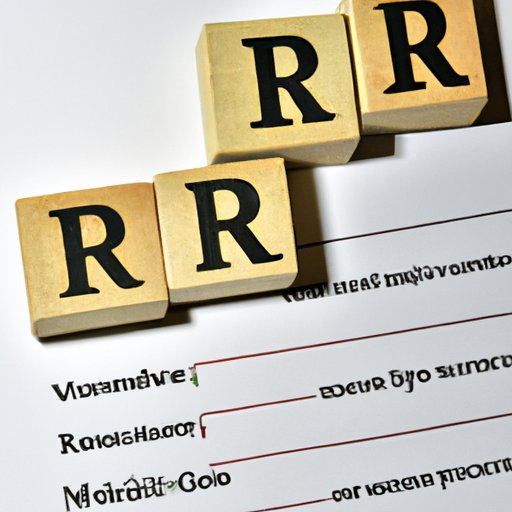
Can You Lose Money in a Roth IRA? Understanding its Risks and Downsides
Investing in a Roth IRA offers many advantages, including tax-free gains and flexible withdrawal options. However, like any other investment, it involves risks and downsides. Despite the promise of tax-free income, a Roth IRA doesn’t always guarantee investment profits. In this article, we explore the risks and downsides of investing in a Roth IRA, potential pitfalls to avoid and strategies to protect your wealth in the long run.
What is a Roth IRA?
A Roth Individual Retirement Account (IRA) is a retirement savings vehicle that allows you to save and invest money on an after-tax basis. Unlike traditional IRAs, you do not get an upfront tax deduction on your contributions. But, you can withdraw your investment returns and earnings tax-free after the age of 59½, as long as the account has been open for at least five years.
Understanding the Risk of Loss
While a Roth IRA offers many benefits, it also comes with certain risks that could lead to losses. For instance, the investments you choose may lose value. Even if your investments do well, you could still see a negative return on investment if the earnings don’t offset the costs of the fees.
Examples of Ways You Could Lose Money by Investing in a Roth IRA
One way you could lose money in a Roth IRA is if you make poor investment choices. For example, if you invest in the stock market, and the market drops, you could lose money. The same applies to mutual funds and exchange-traded funds (ETFs) if their values also dip. Additionally, if you withdraw funds from your Roth IRA before you’re 59½, you may face early withdrawal penalties.
Why Tax-Free Gains Don’t Necessarily Equate to Guaranteed Profits
While the tax-free status on Roth IRA may be attractive, it’s important to note that creating a tax-free retirement account doesn’t necessarily equate to guaranteed profits. The tax-free status only holds under specific conditions. Investing in stocks, mutual funds, and ETFs inherently contains some risks, which could result in losses. In essence, although you’ve saved on your taxes, you could lose more than you saved.
Potential Downside Risks: Market Volatility and Timing Issues
One of the main risks of investing in the stock market is volatility. In other words, stock prices are known to fluctuate in the short term, which could impact the value of your investments. Additionally, timing issues also pose a risk for investors who recognize the market timing process is unpredictable.
Navigating the Pitfalls: How to Avoid Losing Money in a Roth IRA
Whether you’ve just opened a Roth IRA or are a seasoned investor, mitigating risks can be challenging. However, adopting some best practices can help you avoid losses and protect your investments.
Strategies for Mitigating Potential Risks
One of the best strategies to mitigate potential risks in a Roth IRA is to diversify your investments. Diversification can help spread the risk, hence reducing the likelihood of losing it all. Additionally, every investor should also have an exit strategy in place.
Best Practices for Avoiding Losses and Protecting Your Investments
Several best practices can help you avoid losses and protect your investments, such as focusing on low-cost index funds, regularly rebalancing your portfolio, and taking a long-term view. Other ways to protect your assets include reviewing your portfolio, setting realistic expectations, and seeking professional guidance.
Unpredictable Markets: Why You May Experience Losses in Your Roth IRA and What to Do About It
Markets can be unpredictable in the short term. So, if you experience losses in your Roth IRA, it may not be because the investment is bad, it could be a market swing. To help control losses and protect your wealth, a balanced portfolio can help. This strategy involves investing in diverse assets that react differently and shield you when one asset class experiences a decline.
Strategies for Controlling Losses and Protecting Your Wealth
Potential ways to control losses and protect your wealth include sticking to your plan, investing in low-cost index funds that track markets over the long run, prioritizing value over price, and staying diversified. Further, having an emergency fund and insurance policies in place can provide safety nets during unexpected situations.
The Overlooked Risks of a Roth IRA: How to Protect Your Wealth in the Long Run
While Roth IRA investments offer long-term savings and benefit from tax-free growth, it’s essential to recognize the potential risks associated with them. One of the significant risks is outliving your income, which can happen because of inflation and increased medical expenses. To protect your wealth, you may consider planning for a longer retirement period, maintaining an investment strategy aligned with your financial goals, and knowing when to retire.
Specific Strategies to Ensure Long-term Wealth Protection
Specific strategies to consider when planning for long-term wealth protection in a Roth IRA account include developing a retirement budget to manage spending, estimating future expenses, and assessing potential income sources. Additionally, diversifying your investments, sticking to your investment plan, and seeking professional guidance are smart financial management choices.
Conclusion
While investing in a Roth IRA offers many benefits, it’s essential to recognize that investing carries risks, and there may be instances where investors may lose money. However, by adopting a long-term view, diversifying your portfolio, sticking to your investment plan, and seeking professional guidance, you can mitigate risks and protect your investments. Investing is an ongoing process, and by using the strategies outlined in this article, you can take steps towards a financially healthy retirement.
Call-to-Action
Start by creating an investment plan and sticking to it. Stay diversified and focus on low-cost index funds for maximum returns. Remember, investing carries risks, but with a long-term view and good financial advice, you can minimize losses and protect your wealth in the long run.




